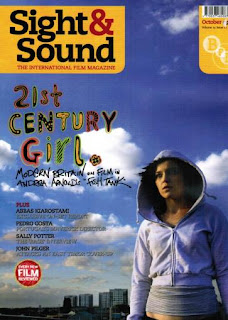 Moreover, the ultimate purpose of a magazine film review is to directly illustrate, exclaim and provided the audience with information and third person opinions on upcoming films that are to be released at the Box Office in the up coming weeks. This is done as Film Review Magazines like well known British Magazine “Total Film” “Kamera” and “Uncut” provide the audience with a general plot and synopsis of the film. Through this film reviewers like Ginette Vincendeau working for “Sight and Sound” Magazine provide an in depth and detailed synopsis of the film, providing the audience with the entirety of the film within one article by a film reviewer. However this may vary between Film Review Magazines as it is commonly known that “Sight and Sound Magazine” provide the audience with a detailed synopsis on up-and-coming films e.g. the 2011 Production of Black Swan or 2010 Production of the King’s Speech. Moreover, Sight and Sound Magazine are also notorious for giving away many spoilers within their articles, making the viewing of the movie almost pointless to the audience.
Moreover, the ultimate purpose of a magazine film review is to directly illustrate, exclaim and provided the audience with information and third person opinions on upcoming films that are to be released at the Box Office in the up coming weeks. This is done as Film Review Magazines like well known British Magazine “Total Film” “Kamera” and “Uncut” provide the audience with a general plot and synopsis of the film. Through this film reviewers like Ginette Vincendeau working for “Sight and Sound” Magazine provide an in depth and detailed synopsis of the film, providing the audience with the entirety of the film within one article by a film reviewer. However this may vary between Film Review Magazines as it is commonly known that “Sight and Sound Magazine” provide the audience with a detailed synopsis on up-and-coming films e.g. the 2011 Production of Black Swan or 2010 Production of the King’s Speech. Moreover, Sight and Sound Magazine are also notorious for giving away many spoilers within their articles, making the viewing of the movie almost pointless to the audience.  Furthermore, Film Review Magazines also provide objective opinions and third party recommendations on the film under review. This means that a typical review on a film would provide the audience with an opinion on the actors in the film but, also commentary on the director's style and narrative structure. This is generally capped with an overall viewpoint on the production of the film the main director and producer in question. This is usually done through a star rating system from 1 being Tragic or Unacceptable e.g. the 2004 production of Catwoman, to 5 being excellent, outstanding and a must see film e.g. the 2010 James Cameron production of Avatar. Overall, the main function of Film Review Magazines is to offer guidance to the audience about what films to see, practically deploying the audience with more information about the film in question then the film’s film poster which only provides the audience with a minute element of the plot and synopsis of the film.
Furthermore, Film Review Magazines also provide objective opinions and third party recommendations on the film under review. This means that a typical review on a film would provide the audience with an opinion on the actors in the film but, also commentary on the director's style and narrative structure. This is generally capped with an overall viewpoint on the production of the film the main director and producer in question. This is usually done through a star rating system from 1 being Tragic or Unacceptable e.g. the 2004 production of Catwoman, to 5 being excellent, outstanding and a must see film e.g. the 2010 James Cameron production of Avatar. Overall, the main function of Film Review Magazines is to offer guidance to the audience about what films to see, practically deploying the audience with more information about the film in question then the film’s film poster which only provides the audience with a minute element of the plot and synopsis of the film.Review of the Avatar can be found at:






















